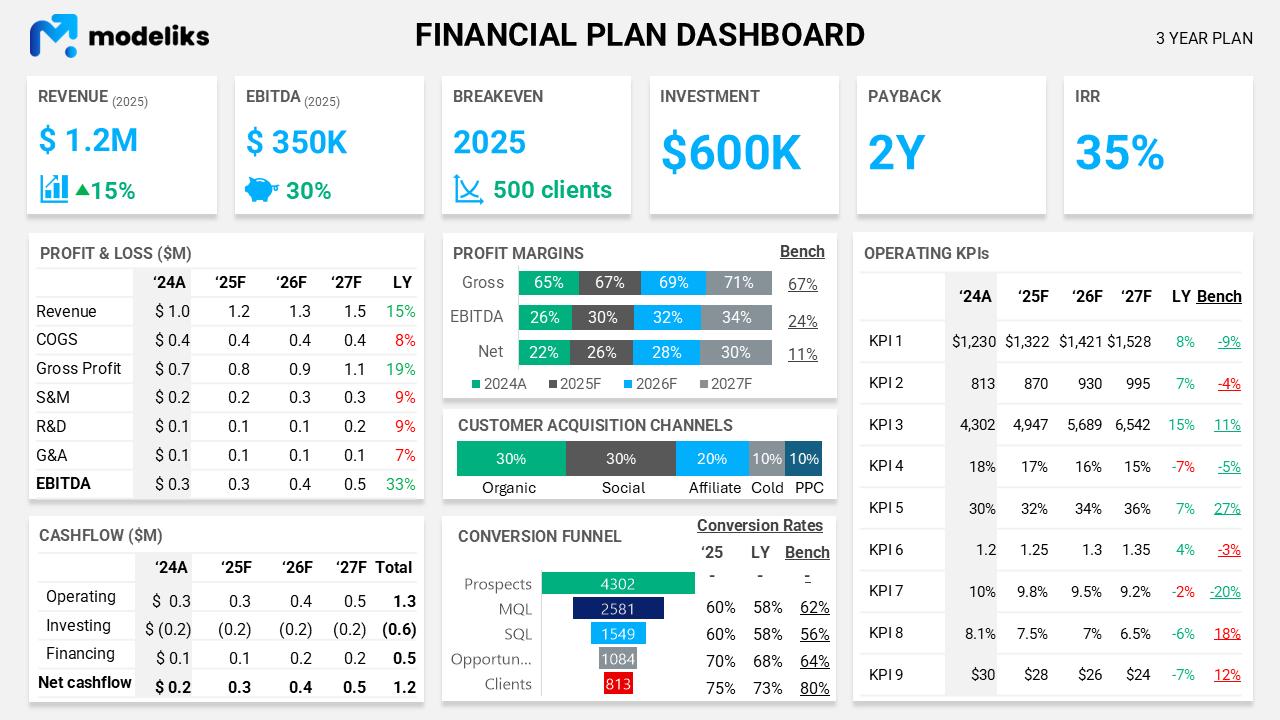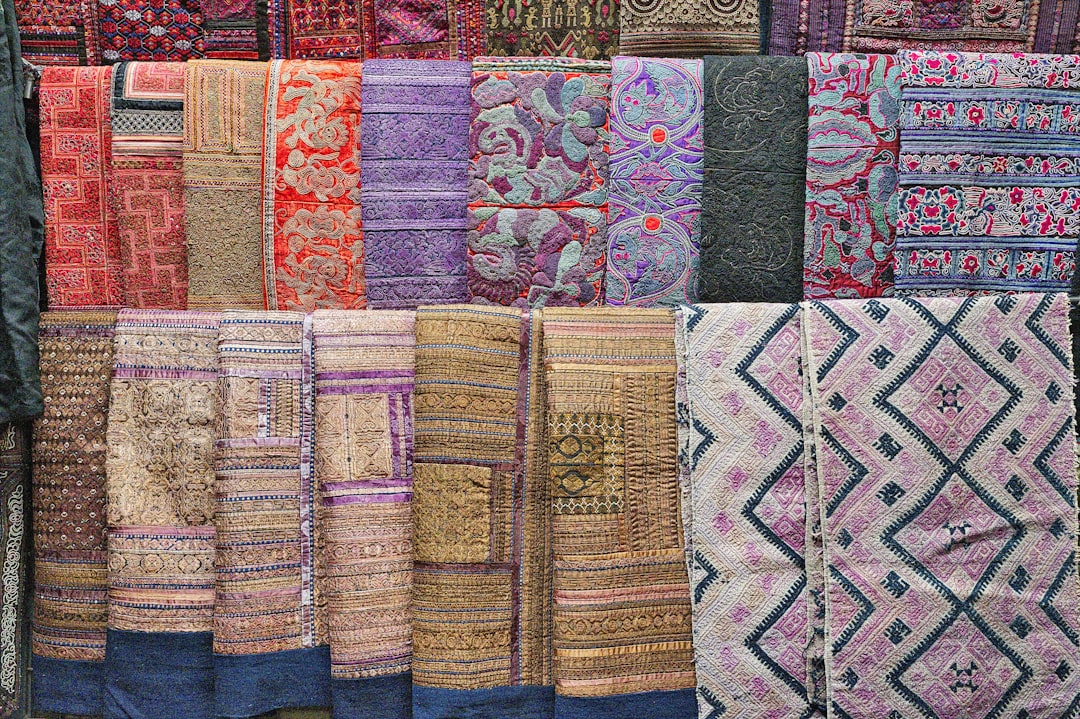Our Handwoven Textiles and Rugs Financial Model Structure covers all the essential aspects you need to consider when starting or scaling a Handwoven Textiles and Rugs business. By following this structure, you can better understand your revenue streams, costs, and assets, helping you optimize profitability and strategically plan for growth.
Building a thriving handwoven textiles and rugs business requires not only passion for quality craftsmanship but also an astute financial plan. A comprehensive Handwoven Textiles and Rugs financial model is key to understanding potential revenue streams, direct costs, necessary staffing, operational expenses and assets you need to consider when starting or expanding your enterprise. Additionally, it can spark innovative ideas for new and profitable revenue streams. The Handwoven Textiles and Rugs financial model structure, however, is crucial for long-term success because it provides a framework for sustainability. Although there are challenges, this approach enables entrepreneurs to navigate complexities effectively.
The Handwoven Textiles and Rugs financial model structure
Revenues
This section outlines typical revenue streams of a handwoven textiles and rugs business, along with methods to calculate revenue from each source:
- Direct Sales : Revenue is calculated by multiplying the price per item by the number of units sold.
- Wholesale Contracts : Determine revenue via longer-term agreements with retailers, based on agreed per-unit pricing.
- Custom Orders : Calculate revenue per custom piece by assessing labor and material costs, plus a set profit margin.
- Online Marketplace Sales : Revenue comes from items sold through platforms like Etsy or Amazon, less platform fees.
- Exhibition Sales : Income generated at events and trade shows is based on sales volume during the event.
- Workshops : Calculate revenue from enrollment fees for weaving workshops or classes, however it might vary.
- Collaboration : Income from partnering with interior designers or decorators for exclusive designs; this can enhance visibility.
- Licensing Fees : Revenue from licensing your designs to other producers, although the terms can vary significantly.
Cost of goods sold
Corresponding COGS include materials (yarns, dyes, weaving equipment) and labor costs necessary to produce the textiles and rugs; however, any subcontractor costs involved in specialized processes, such as dyeing or finishing, must also be considered. Although this may complicate calculations, it is essential because each component impacts the overall financial assessment.
Employees
The business typically employs the following roles:
- Weavers : Craft textiles and rugs by hand, ensuring quality and consistency.
- Designers : Create patterns and plan design layouts for each product; however, Sales Managers drive sales through various channels.
- Marketing Specialist : Develop and implement strategies to enhance brand visibility and customer engagement.
- Operations Manager : Oversee production processes, because inventory management is crucial.
- Accountant : Handle financial records, budgeting, and reporting, although this can be complex at times.
Operating expenses
This encompasses costs that are essential for daily operations:
- Rent : Expenses related to leasing space for production and showroom.
- Utilities : Costs for electricity, water, and heating crucial for operation.
- Marketing and Advertising : Budget allocated for promoting your business across various media channels.
- Insurance : Coverage for liability, property, and inventory protection.
- Shipping and Delivery : Expenses associated with sending products to customers or retailers.
- Equipment Maintenance : Regular upkeep costs for looms and other production equipment.
- Supplies : Office and packaging supplies necessary for daily business activities.
- Website Hosting : Costs incurred for online sales platform and domain maintenance.
- Training and Development : Investment aimed at enhancing employee skills and keeping pace with industry trends.
- Professional Fees : Costs associated with legal, accounting, and consulting services.
However, one must recognize that while these expenses are necessary, they can strain financial resources. Because of this, careful budgeting becomes essential. Although it may be challenging, businesses must navigate these costs wisely to ensure sustainability.
Assets
Critical assets include:
- Looms : Essential for weaving; represent significant capital investments; however, they are crucial in the production process.
- Inventory : Both raw materials and finished goods must be ready for sale; this is vital.
- Workshop Space : Functioning as production and storefront, it facilitates operations.
- Transportation : Vehicles play a key role in the procurement of materials, because without it, production would be hindered.
Funding options
Consider these options to fund your operations:
- Bank Loans : Secured or unsecured loans from financial institutions.
- Angel Investors : Individuals investing personal capital in exchange for equity.
- Grants : Funds available for small businesses through government or private agencies that do not need to be paid back.
- Venture Capital : Firms investing in return for partial ownership and a say in decision-making.
- Crowdfunding : Raising small amounts of capital from a large number of people, typically via the internet.
Driver-based financial model for Handwoven Textiles and Rugs
A truly professional financial model for a Handwoven Textiles and Rugs business is based on operating KPIs (also known as “drivers”) relevant to the industry. Examples of such KPIs include:
- Cost per Unit Manufactured : Represents the total cost incurred in producing each unit.
- Sales Conversion Rate : The percentage of potential customers who make a purchase.
- Average Transaction Value : The average amount spent per customer transaction.
- Customer Acquisition Cost : Cost incurred to acquire a new customer.
- Load Factor : Efficiency of capacity usage in the workshop and inventory.
- Lead Time : Time taken from customer order to fulfillment.
- Return Rate : Percentage of sold items that are returned due to defects or dissatisfaction.
- Staff Productivity : Output per worker, measured as units produced per hour.
Driver-based financial planning (a process of identifying key activities, or ‘drivers’, with the most substantial impact on business results) is essential for effective strategy. This approach enables the establishment of relationships between financial outcomes and the resources required to attain those outcomes (such as personnel, marketing budgets, equipment, etc.). Although you may seek further insights into driver-based financial planning and why it is the optimal method for planning, consider watching the founder of Modeliks elucidate this concept in the video embedded below.
Need a business plan?
Create one with Modeliks AI in the next hour!
AI powered business planning for Startups and SMEs.
The financial plan output
The objective of the financial forecast outputs should enable you, your management, board, or investors to quickly grasp how your Handwoven Textiles and Rugs business will perform in the future. You will gain comfort because the plan is thoroughly thought out, realistic, and achievable. Furthermore, understanding what investment is required to implement this plan and what the return on that investment will be is crucial. To achieve these goals, here is a one-page template illustrating how to effectively present your financial plan.

Apart from this one-page summary of your plan, you will require three projected financial statements:
- Profit and Loss : Showcases expected revenue streams, costs, and profitability.
- Balance Sheet : Provides an overview of assets, liabilities, and equity at a specific point in time.
- Cash Flow Statement : Projects cash inflows and outflows over a given period.
Handwoven Textiles and Rugs financial model summary
A professional handwoven textiles and rugs financial model will help you think through your business, however, identify the resources needed to achieve your targets, set goals, measure performance, raise funding, and make confident decisions to manage and grow your business. Although careful planning and execution are essential, this model serves as a vital tool in navigating the financial landscape of your handcrafted venture, ensuring sustainable growth and profitability.
If you need help with your financial plan, try Modeliks , a financial planning solution for SMEs and startups or contact us at contact@modeliks.com and we can help.
Author:
Blagoja Hamamdjiev
, Founder and CEO of
Modeliks
, Entrepreneur, and business planning expert.
In the last 20 years, he helped everything from startups to multi-billion-dollar conglomerates plan, manage, fundraise, and grow.

TAKE MODELIKS FOR A SPIN
Not sure which plan?
Start with a 15 days free trial.
You will have access to the full functionality of Modeliks. The only restriction in the free trial is that you cannot download or share your business plan outside Modeliks. Credit card is not required to subscribe for the free trial.






